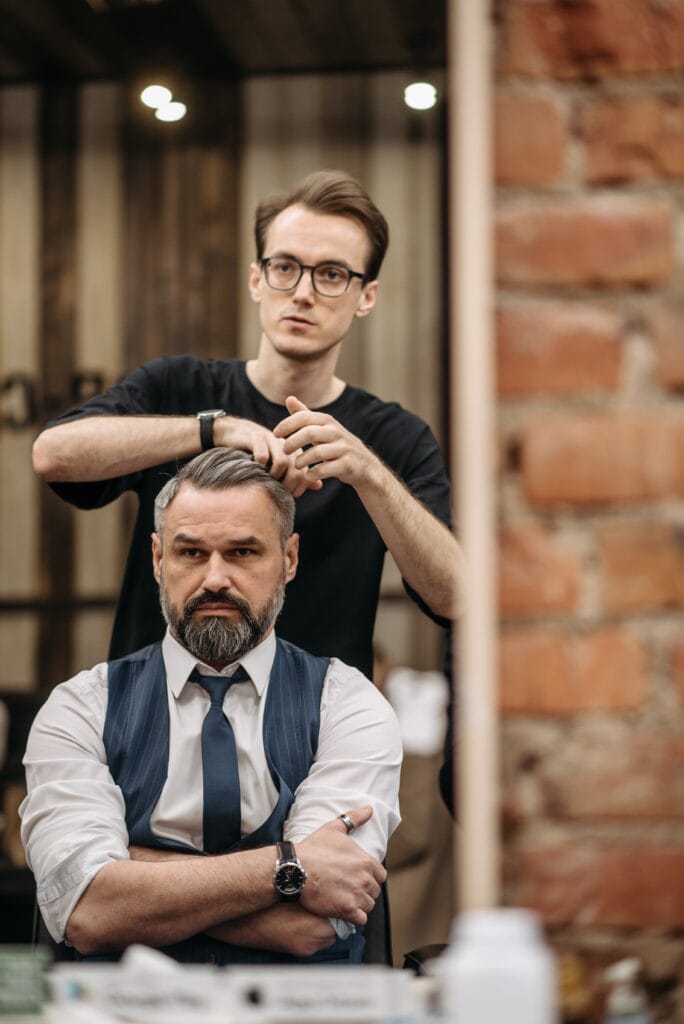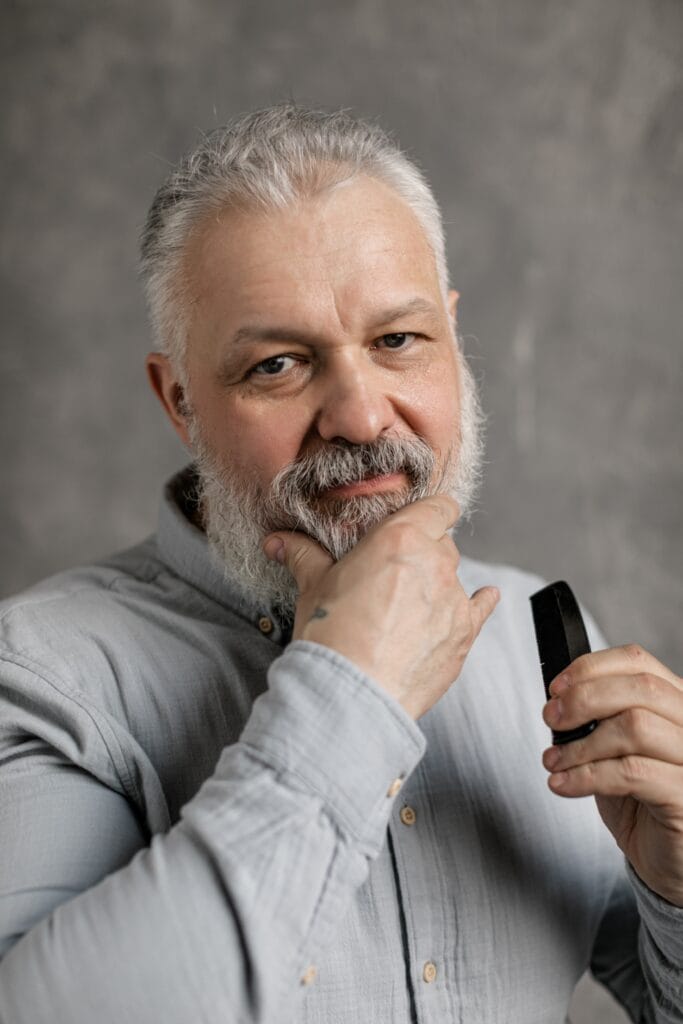Gray Hair Myths sound Promising

It's scary to see your first gray hair. Most people act like it's a big deal, but gray hair is a part of getting older, whether you like it or not. People who make a big deal out of this might do so because they heard a myth about it. This myth might be true or false. We have covered all the common myths regarding gray hairs in this post.

Myth: Gray hair is a natural consequence of coloring your hair
Since hair follicles are located beneath the skin, there is nothing you can do to the strands of your hair after they have grown beyond the scalp that will affect whether or not you will become gray.
Myth: Graying of the hair occurs more rapidly under stress
Working or stress does not cause hair to fall out. So-called oxidative stress plays a deciding role because it affects hair follicle stem cells. It gets harder to fight oxidative stress as we get older. The sensitive pigment cells are rendered nearly defenseless if the defensive work decreases, and then additional factors, such as psycho-emotional stress and environmental stress (UV rays, smoking, etc.), come into play. They end up dying a lot sooner than they should have as a result, emotional distress can also hasten the onset of graying associated with advancing age.
Myth: As you get older, your hair turns gray
Most hair does not turn gray, but white. Why? In the hair roots, some cells produce pigment. They pass the pigment bodies onto the hair shaft, the actual hair that is visible from the outside. They die off in a certain rhythm and are regenerated from stem cells. But at some point, the stock of stem cells is exhausted, i.e. no more pigment cells are produced.
Therefore, the cells that make dyes in the hair root slow down production. They die without being replaced. This is how white hair grows back. However, this does not happen to all hairs at the same time. This mixes dark and white hair, resulting in an overall gray look. On the other hand, there are individual hairs that have a thinning of the pigment.
Myth: Gray hair is hereditary
A person's risk of developing gray hair increases with their age. Age 35 is typically when people in Europe notice their first gray hair. Age 40 is typically when Asians first start to experience gray hair. Africans are well known for their dreadlocks style. On average, Africans keep their natural pigmentation until age 45. The loss of pigmentation is largely inherited. The underlying genes were just recently identified by researchers in Britain. The number of pigment stem cells is also predetermined by genes.
Myth: It's possible to age rapidly and turn gray
Time is needed for hair to go completely gray. However, there have been accounts of sudden graying. Without exception, every colored hair fell out, leaving only the gray.
However, this is a disease where the immune system turns on the body by attacking its substances, specifically the hair's pigment. To others, it may appear as though you suddenly went gray if only the colored parts of your hair fell out, leaving behind only the white or gray ones.
Myth: You won't lose your hair color or volume if you go gray
Good genes and avoiding graying are no guarantee against hair loss. The normal hair root cycle includes the potential for gray hair to fall out.
Myth: Yellowing of white hair is possible
Truth. The natural oxidation of hair, just like that of artificially bleached hair, gives gray hair a yellowish cast. Are you hoping to prevent this result? Avoid prolonged exposure to the heat of the sun and the chlorine in the pool, and protect your hair from the heat with a thermal spray. The hair should be treated with de-yellowing products if it has already turned yellow.
Myth: The sun speeds up the hair bleaching process
Too much time in the sun can damage hair, but there is no evidence that it directly speeds up hair aging or makes gray hair appear. That doesn't mean you should not protect your hair from the sun. Before exposing your hair to UV rays, always use a leave-in conditioner with sun protection.
Myth: White hair makes the look much more elegant
The white hair has been increasingly assumed by women, leaving the look much more elegant and natural. White hair, in addition to being beautiful, is part of a very important female empowerment movement.
But don't forget to always keep them protected and hydrated! Discover the best treatment for your hair with a professional diagnosis made at the beauty salon.
Myth: Men are more likely to have gray hair
Contrary to popular belief, gray hair does not manifest differently depending on a person's gender. The idea behind this myth comes from the fact that men are more likely than women to mentally age themselves by getting more gray hair.
This is not true, though, because there are also women who get gray hair at younger ages. But, if you are a man and you have gray hair, you don’t have to worry about hairstyle when there are top 80’s hairstyles for men.
Myth: It's possible to color your gray hair
Unfortunately, there are bounds to how far you can cover in gray. Gray hair can be concealed only by coloring. Similar to coloring, gray shading can be used to add depth to an image, though the mass of color doesn't stick around for very long. Her appearance is very unforced. Because only 30–50% is colored, a shimmer is produced. After a few weeks, the color will grow and wash out.
Myth: if you pluck out the first gray hair, three more will grow back in its place
Despite popular belief, removing stray hairs from your head may not be harmful. A healthy hair follicle should be able to produce more than two hairs. This facilitates the identification of gray hair and the visualization of clusters.
New hair growth has nothing to do with old hair that has been lost or damaged. There is no evidence to suggest that removing any of the white hairs below will cause new hair to sprout in its place. If that were the case, then achieving thicker hair would be a breeze. Moreover, ripping out the strands can harm the root and impede hair growth, regardless of whether they are gray or not.
These are in fact great ideas in regarding blogging. You have touched some fastidious things here.
Any way keep up wrinting.
Woah! I’m really digging the template/theme of this blog.
It’s simple, yet effective. A lot of times it’s difficult to get
that “perfect balance” between superb usability and visual appearance.
I must say you have done a excellent job with this. In addition, the blog
loads very fast for me on Opera. Excellent Blog!
I am really happy to read this weblog posts which carries tons of valuable data, thanks for providing such
statistics.
Greetings! Very helpful advice in this particular post!
It’s the little changes which will make the biggest changes.
Many thanks for sharing!
Hello! Do you use Twitter? I’d like to follow you if that would be
okay. I’m undoubtedly enjoying your blog and look forward to new posts.
I absolutely love your blog and find most of your post’s to be exactly I’m looking for.
Does one offer guest writers to write content for you personally?
I wouldn’t mind publishing a post or elaborating on many
of the subjects you write in relation to here.
Again, awesome web site!
Everything is very open with a very clear description of
the challenges. It was really informative. Your
site is extremely helpful. Many thanks for sharing!
This was far more nuanced than most posts on this topic.
Cheers for treating it with this care.
Hello 🙂 Your blog looks good. have a nice day.
the blog was absolutely fantastic!
Wow, fantastic blog layout! How long have you ever been blogging for?
you make blogging glance easy. The whole look of your site is fantastic, as neatly
as the content!
You have a talent for making things clear.